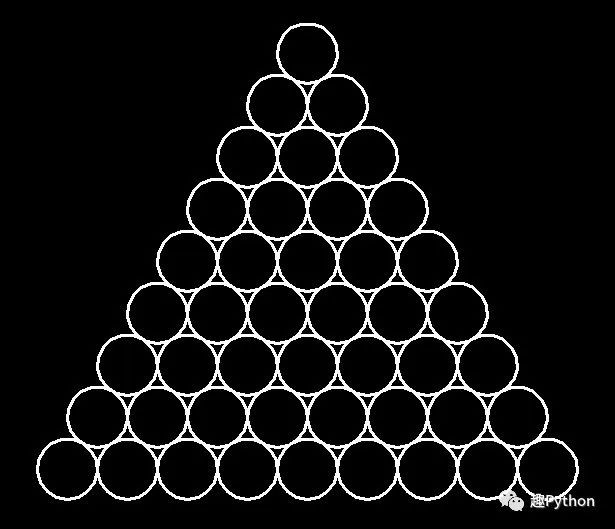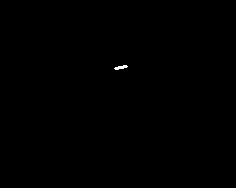
Code :
turtle.circle(30)Tulio .
design sketch :

This requires a little mathematical knowledge .
The relative positions of the three circles form an equilateral triangle , Suppose the starting position of the first circle is (x0, y0), that , The starting position of the second circle is (x0-r, y0+sqrt(3)r), The starting position of the third circle is (x0-r+2r,y0+sqrt(3)r).
Knowing the relative position drawing method is simple .
First draw the first circle , The code is :
r = 30
x0 = 0
y0 = 300
turtle.penup()
turtle.goto(x0, y0)
turtle.pendown()
turtle.circle(r)Find the starting position of the second circle :
x0 -= r
y0 -= math.sqrt(3)*rDraw a second circle :
turtle.penup()
turtle.goto(x0, y0)
turtle.pendown()
turtle.circle(r)Draw the third circle :
turtle.penup()
turtle.goto(x0+2*r, y0)
turtle.pendown()
turtle.circle(r)Get it done , The sharp eyed students must see that it can be reconstructed , We'll wait .
design sketch :

Already by 1 Layers are derived to 2 layer , that , from 2 Layer derived to 3 The layer is simpler , Add code directly .
x0 -= r
y0 -= math.sqrt(3)*r
turtle.penup()
turtle.goto(x0, y0)
turtle.pendown()
turtle.circle(r)
turtle.penup()
turtle.goto(x0+2*r, y0)
turtle.pendown()
turtle.circle(r)
turtle.penup()
turtle.goto(x0+4*r, y0)
turtle.pendown()
turtle.circle(r)We found that ,1->2,2->3 The logic of is the same , The code is basically the same , Refactoring .
def stack_circles(x0, y0, r, stacks):
turtle.penup()
turtle.goto(x0, y0)
turtle.pendown()
turtle.circle(r)
if stacks > 1:
for s in range(1, stacks):
x0 -= r
y0 -= math.sqrt(3)*r
for _ in range(s+1):
turtle.penup()
turtle.goto(x0 + 2*_*r, y0)
turtle.pendown()
turtle.circle(r)
turtle.update()pefect.


